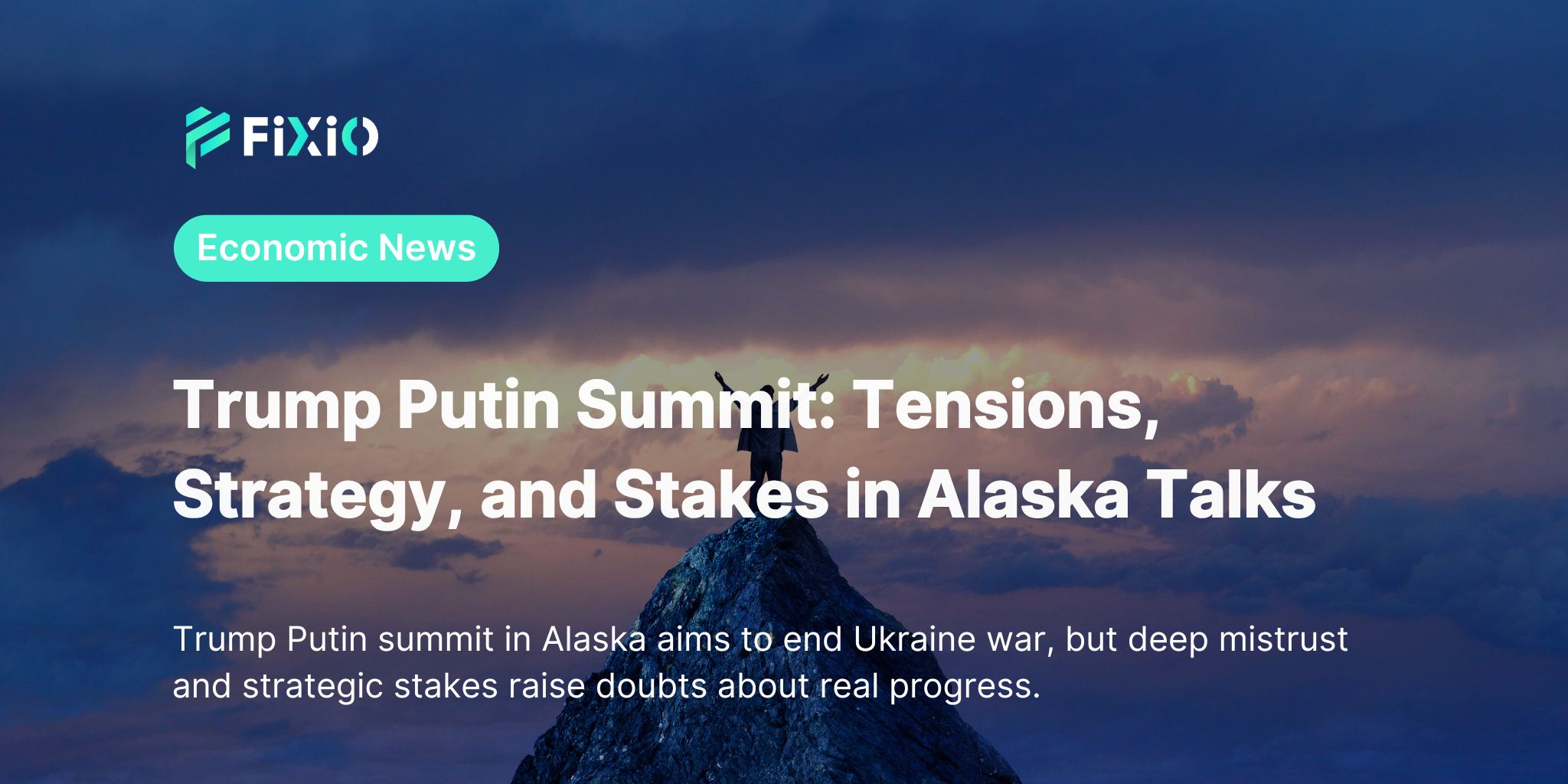
The Trump Putin summit in Alaska is poised to test whether hard power and personal diplomacy can coexist. With Russia’s ongoing invasion of Ukraine still grinding on, markets, diplomats, and defense planners will watch for any sign of a credible path to peace—or confirmation that confrontation endures.
Supporters of a reset argue the meeting could convert pressure into progress. Critics counter that any handshake without substance risks rewarding aggression. Since 2022, Moscow’s aims have centered on territorial control, blocking Kyiv’s bid for NATO membership, and limiting external security guarantees. Those aims clash with Kyiv’s sovereignty and the West’s commitment to deterrence. Because of that core contradiction, many analysts expect tough talks and modest outcomes.
Donald Trump enters the summit confident in his ability to size up rivals quickly. Vladimir Putin remains notoriously difficult to read. A former KGB officer with a tight inner circle, he often telegraphs strength while keeping intentions opaque. That opacity persisted through the pandemic era, when extreme isolation reduced contact with pragmatists and reportedly empowered hardliners. As a result, the Kremlin’s risk tolerance seems higher, while compromise may be framed as weakness at home.
Because Russia’s strategy has depended on control of territory and logistics, any pause in fighting—if badly structured—could let the Russian military reset. Historically, a badly designed ceasefire can consolidate the stronger belligerent’s gains. Kyiv’s allies therefore fear a “freeze” that looks like peace but functions like capitulation. In contrast, a robust framework would need verifiable withdrawals, security guarantees, and mechanisms that deter renewed attacks.
Some European capitals worry that meeting Putin on U.S. soil without Ukraine present risks optics that imply parity after an unlawful invasion. They stress sequencing: humanitarian measures, missile de-escalation, and a credible cessation of attacks should precede any political concessions. They also emphasize that leverage—military aid, export controls, and financial penalties—should not be traded away without durable gains.
Trump projects confidence that he can read counterparts fast and reach deals early. That style can produce breakthroughs, yet it can also collide with entrenched interests and structural constraints. In this case, any agreement that affects borders ultimately involves Kyiv, not only Washington and Moscow. That reality limits how far bilateral gestures can go without Ukraine’s explicit consent.
Putin must balance military realities, domestic expectations, economic costs, and external dependencies. He may seek recognition of current lines, limits on Western weapons to Ukraine, or “guarantees” that preclude NATO expansion. Yet maximalist positions will clash with allied red lines. Internally, he must frame any compromise as victory; externally, he must avoid steps that sharply increase Western resolve or widen Russia’s isolation.
Even though this is geopolitics, traders will parse every line for risk sentiment. If the Trump Putin summit reduces near-term escalation risk, safe-haven demand could ease, and cyclical assets might catch a bid. If talks fail and hostilities intensify, defense-linked assets and havens could outperform. In either case, headline sensitivity remains high, and liquidity gaps can amplify moves.
Observers inevitably compare today’s meeting with the 2018 Helsinki summit. The stagecraft differs, yet the stakes echo: credibility, deterrence, and narrative control. The Trump Putin summit in Alaska must avoid photo-op pitfalls and prioritize substance over ceremony. Otherwise, it risks replaying a familiar cycle—optimistic pre-summit talk followed by post-summit ambiguity.
Regardless of geopolitics, civilian safety should remain nonnegotiable. Agreements on medical evacuation routes, prisoner exchanges, and protection of energy and water infrastructure can save lives even without a grand bargain. Durable humanitarian wins build limited trust, strengthen monitoring networks, and create precedents for compliance.
Disinformation will track the summit. Rapid claims of “breakthroughs” or “betrayals” can precede the actual communiqués. Analysts will therefore cross-check official texts, note specific verbs and timelines, and look for mechanisms that outlast headlines. Precision matters: who verifies, when, and with what access?
Past conflicts show that lasting arrangements require verifiable demobilization, third-party monitoring, and consequences for violations. Without those, a ceasefire can act as a pause button for rearmament. That is why many European governments want any framework to tie relief to compliance, not to promises alone.
Both leaders face internal audiences. For Trump, domestic consensus on deterrence and alliance credibility matters. For Putin, projecting strength and control is essential. These constraints both hinder compromises and shape openings. If each side can frame limited steps as advancing national interests, a narrow but useful package becomes possible.
Leaders will test whether there is space for a responsible de-escalation. Even limited humanitarian and security steps would count as meaningful progress if they are enforceable.
Possibly, yet structure matters. A ceasefire without verification, timelines, and penalties can entrench current lines and invite renewed attacks later.
Alliance cohesion is central. Any framework that weakens deterrence or sidelines European security would face strong resistance among allies and within legislatures.
Geopolitical risk transmits through energy prices, trade flows, capital costs, and defense spending. Headlines can shift positioning fast, especially in thin liquidity conditions.
Success at the Trump Putin summit will not be measured by smiles or sound bites. It will be measured by whether civilians are safer next week, whether escalation risks fall next month, and whether guardrails exist next quarter. A credible process begins with precise language, independent monitors, and real consequences for violations.
This analysis includes contextual links to help readers explore background material: the ongoing war in Ukraine, the role and history of NATO, the legacy of the KGB, the function and risks of a ceasefire, the evolution and impact of sanctions, the 2018 Helsinki summit, and the broader context of the COVID-19 pandemic. These links provide authoritative primers without interrupting the narrative flow.
The Trump Putin summit may not deliver a grand bargain, but it can still matter. If the talks yield verifiable humanitarian steps and lay the groundwork for enforceable security measures, the needle moves in the right direction. If they merely rebrand stalemate, policymakers should pivot back to sustaining deterrence and supporting Ukraine’s defense—while remaining open to talks that reward compliance, not coercion. Stay informed with the latest Forex trading news and analysis. Visit our website now at: https://fixiomarkets.com/en/prex-blogs
Trump Putin summit in Alaska aims to end Ukraine war, but deep mistrust and strategic stakes raise doubts about real progress.
Superior trade execution & trading conditions with the NDD method.

The online FX industry provides a platform for investors worldwide to engage in the buying and selling.

Subscribe to our daily newsletter and get the best forex trading information and markets status updates
Trade within minutes!
Comment (0)